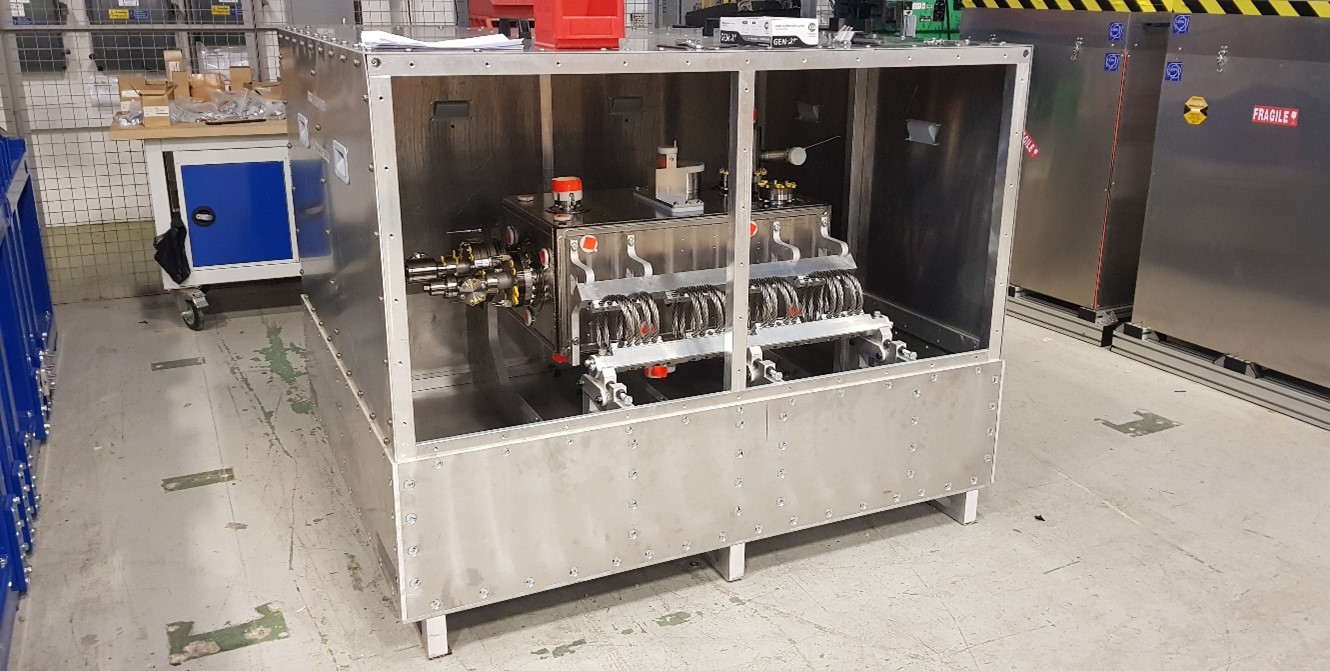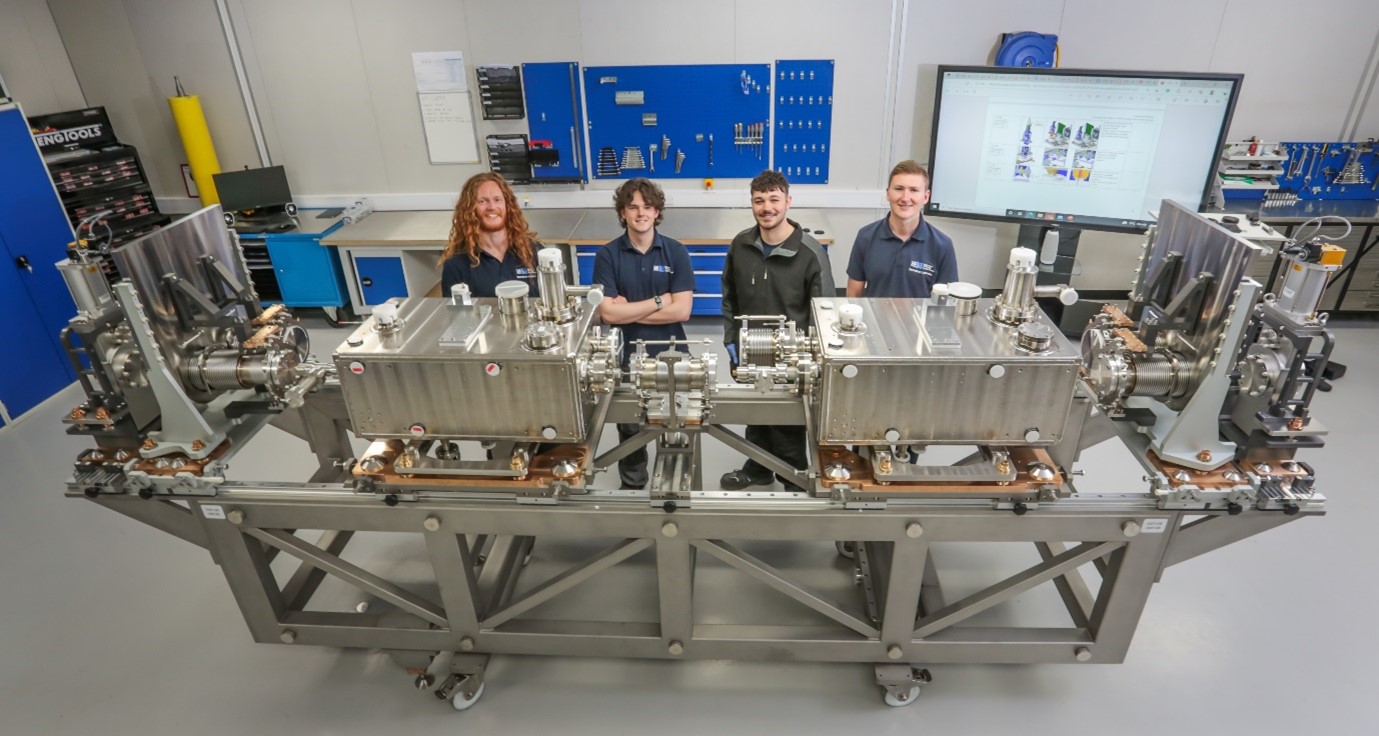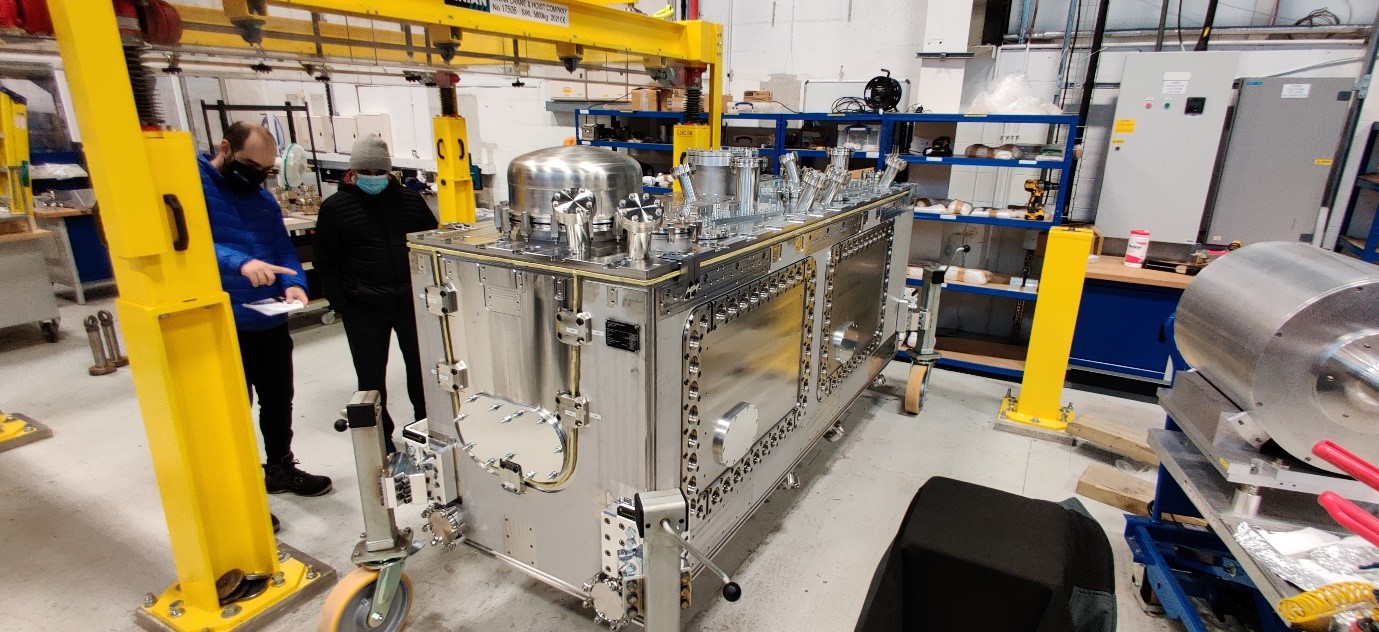CERN, STFC Daresbury Laboratory (STFC-DL) and Lancaster University have collaboratively designed a pre-series cryomodule to house 2 “RF Dipole” type Crab Cavities, with the aim of assembling the module at Daresbury Laboratory and testing at CERN in 2023. The first of the two cavities and ancillaries produced by CERN arrived safely at Daresbury Laboratory on 29th September 2021, the second arrived shortly after on 11th November. Both journeys were monitored from departure to arrival with a sophisticated array of accelerometers with the cavity housed in a bespoke transportation frame fitted with passive wire rope isolators (Figure 1). Extensive testing was performed on the cavities upon arrival, including RF Testing and no issues were found to have occurred in the journey.

Additional long lead time items such as the large 3 m outer vacuum chamber (manufactured by ALCA) and the warm magnetic shield (manufactured by Magnetic Shields Limited) have also been procured by Lancaster and STFC and delivered to Daresbury Laboratory. Staff in the UK have started the build of the module, completing the pre-cleanroom assembly tasks, alignment and clean-down. Next the cavity-string beamline and fundamental power couplers will be assembled in the ISO4 cleanroom. This requires a significant amount of complex tooling in order to minimise the generation of particulates during assembly, which is predominantly achieved by removing opportunities for user error, clashes and frictional sliding contacts. This tooling has been designed in house at Daresbury Laboratory and is now manufactured and set up. The assembly tooling is accompanied by a detailed set of assembly procedures which are written by staff at Daresbury Laboratory and approved by CERN for a series of steps in the assembly.

The cleanroom assembly is followed by welding of the cryogenic lines, further dressing of the RF String with tuners and RF lines then mounting of the completed RF String to the top plate of the outer vacuum chamber and installing of the thermal shields. This suspended assembly is then lowered into the outer vacuum chamber using a bespoke precision 5 tonne manual lifting device. The vacuum chamber is then welded and a series of room temperature and 80 Kelvin, vacuum, mechanical and RF commissioning tests are completed prior to the transport of the module to CERN. The transportation risks are minimised through the use of a dedicated shock isolation frame. This frame has been drop tested and qualified at STFC-DL using a pre-cast concrete block as a mock cryomodule. Upon arrival at CERN, the module will be vacuum and RF cold tested at 2 Kelvin to ensure the cavities still meet the stringent LHC specification before being installed in the SPS accelerator during the end of the year technical stop for testing with beam in 2023.

